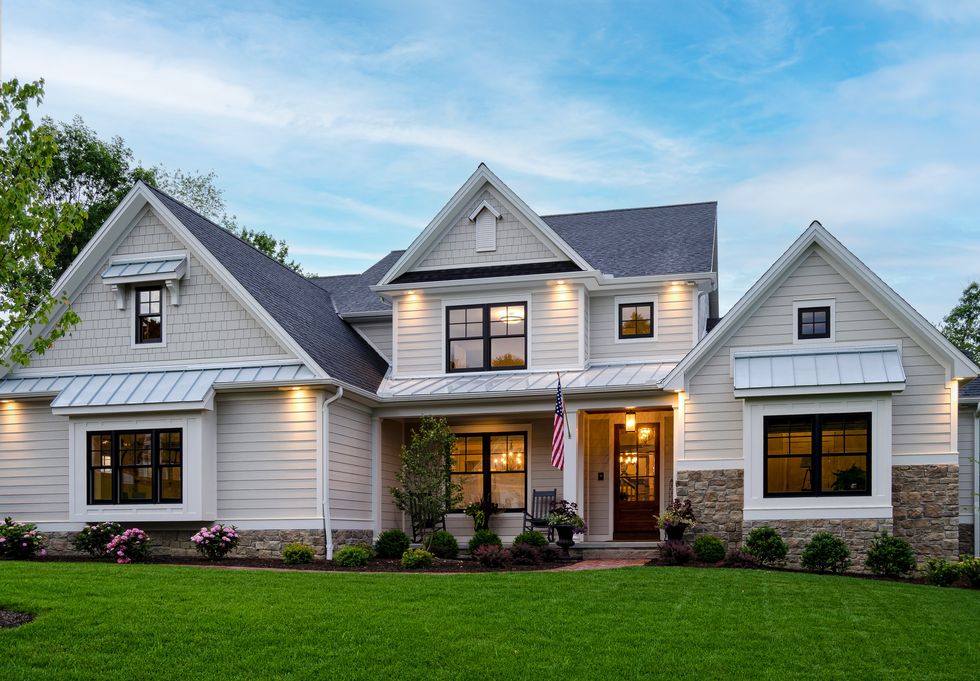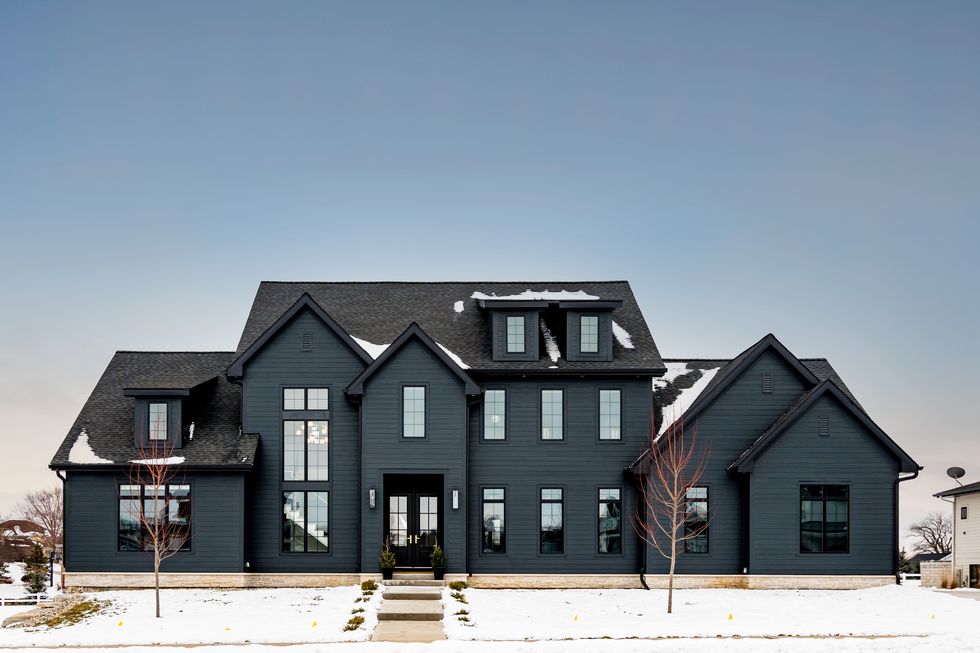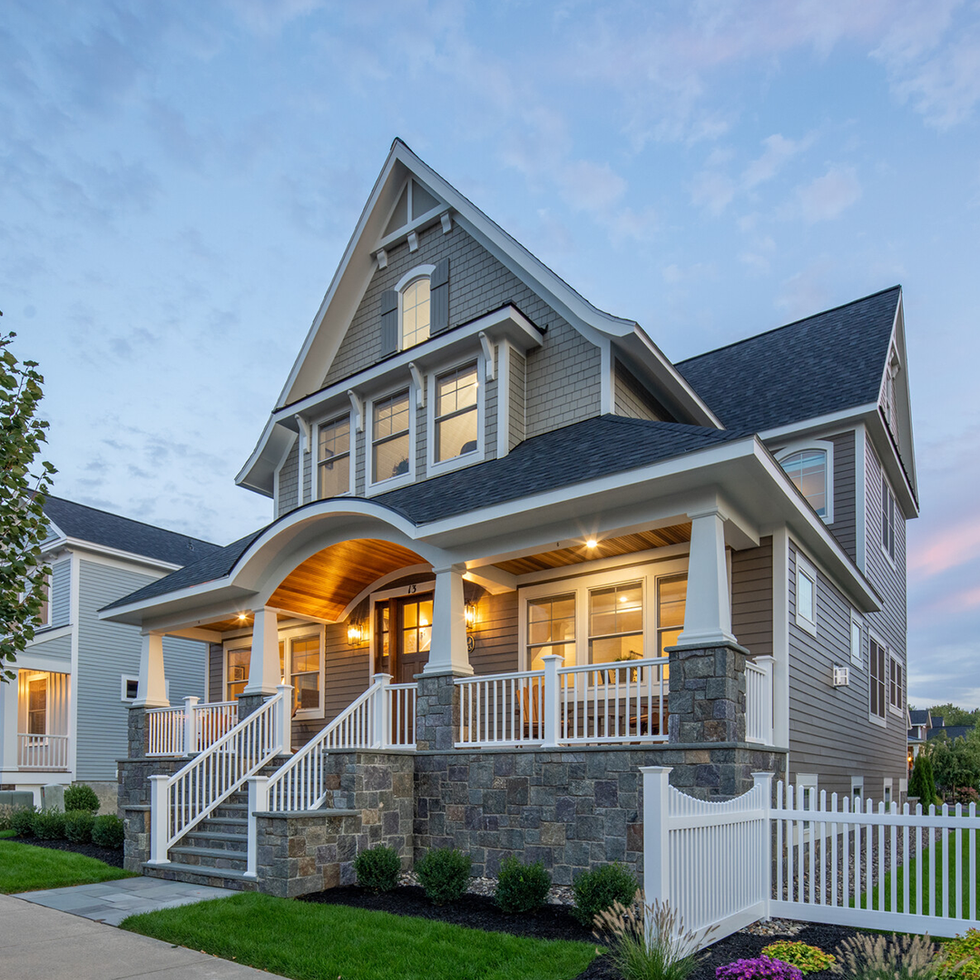Protection makes perfect.
Buying a home is a decision that deserves 100% certainty (unlike, say, your wardrobe, which you might overhaul regularly by season or style). And because it’s basically the investment of a lifetime, it needs to stand the test of time, inside and outside. Yet today’s fickle climate (thank you, global warming) means you never know what Mother Nature has in store — and accordingly, your house requires some serious fortification from the elements over the long term.
“Your home’s exterior features, including its siding and the roof over your head, are the first line of defense, and today it’s more important than ever to invest in durable materials,” says Dan DiClerico, Good Housekeeping’s home improvement & outdoor director. Happily, these choices also affect curb appeal in a very positive way. “Exterior upgrades have some of the highest returns on investment of all home-improvement projects. They’re one of the best ways to add value,” DiClerico says. Read on to learn about some of our recommended ways to go about it.
 JAMES HARDIE
JAMES HARDIE
Rethink your roof
An aging roof can pose some big problems, like leaks and pest infestations, and of course can also be a major eyesore. In most parts of the country, asphalt shingles are the most common option here, given their combination of value and performance. But there are other options worth considering, based on the climate where you live. “In northern areas of the country, for example, metal roofs are popular, because they do a good job of shrugging off heavy snow,” DiClerico says. Conversely, he adds, in warm, dry regions that are prone to wildfires, concrete and terracotta tiles are extremely protective.
Advertisement – Continue Reading Below
 JAMES HARDIE
JAMES HARDIE
Upgrade your siding
If there’s one element that will give your facade an instant facelift, it’s siding, which is also critical in keeping your home safe from the elements and maximizing energy efficiency. Fiber cement is an increasingly popular option, for good reason. “The material proves extremely hard-wearing in our tests, fending off scratches and stains,” says DiClerico. “Plus, it requires very little maintenance — unlike some other materials, which need to be repainted or re-stained every 10 years or so.” His pick: James Hardie’s fiber-cement siding, which is water-resistant, non-combustible, fire-resistant and pest-resistant. It comes as traditional Hardie Plank lap siding, which is backed by the Good Housekeeping Seal, and the more contemporary Hardie Panel Vertical Siding. Hardie Siding also comes in various finishes to satisfy any aesthetic, including Select Cedarmill, stucco and smooth.
 JAMES HARDIE
JAMES HARDIE
Don’t forget trim
This is the finishing touch to your facade. “It’s part of the jewelry of the home, so it can really enhance curb appeal,” DiClerico says. And Hardie Trim Boards can make even the most minor feature a standout. Use them to accentuate corners, columns, doors and windows in any of a variety of styles, like Rustic Grain, a traditional board-and-batten look; Smooth Batten, a contemporary take on the classic; Rustic, with a vintage wood-like texture; or the sleek-looking Smooth.
Advertisement – Continue Reading Below
 JAMES HARDIE
JAMES HARDIE
Pick your panes
While windows can be an afterthought, they can have a major impact on a home’s style, performance and appeal. “And thanks to features like insulated glass and low-E [low-emissivity] coatings that minimize the amount of ultraviolet and infrared light that can pass through, new windows can also make a home more energy-efficient,” DiClerico says. Good Housekeeping recommends wood-clad windows, in which the outside wood is covered in aluminum or vinyl. “This reduces the upkeep, as well as the chance of rotting and insect infestation,” DiClerico notes, adding that composite windows, which are usually fiberglass-based, are another good option. “The best versions have the look of real wood without the need to paint or stain,” he says. “They tend to be very durable, too, making them a good option in extreme climates,” he says.
 AKURTZ//GETTY IMAGES
AKURTZ//GETTY IMAGES
Add hearty hardscaping
Whether it’s a backyard patio or the front walkway to your home, hardscaping makes outdoor spaces both more functional and aesthetically pleasing. It’s become very popular, especially in drought-prone parts of the country. “We’re seeing more homeowners replacing some or all of their lawn with hardscaping materials, since most options eliminate the need for irrigation, and they’re almost maintenance-free,” DiClerico says. He’s partial to concrete pavers for walkways, which “provide better traction than a paved surface, making slips and falls less likely.” Plus, the pavers move independently, so they won’t crack or crumble as easily as a poured-concrete surface can.
 PHOTOTROPIC//GETTY IMAGES
PHOTOTROPIC//GETTY IMAGES
Light it up
Outdoor lighting is your home’s best accessory after sundown. It illuminates architectural features, of course, showing your home at its best — but, perhaps even more important, it will keep you and your visitors safe by lighting the way inside, DiClerico says. As with interior designs, “the key is to create different layers of light,” he explains. Some of the best options include task lighting on pathways and at the front door, and accent lights to illuminate trees, foundation plants and architecture.
BY JENNIFER TZESES




